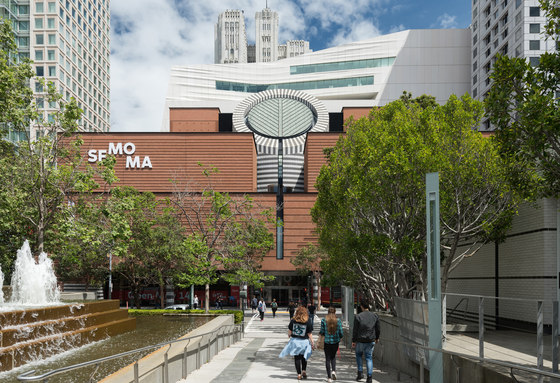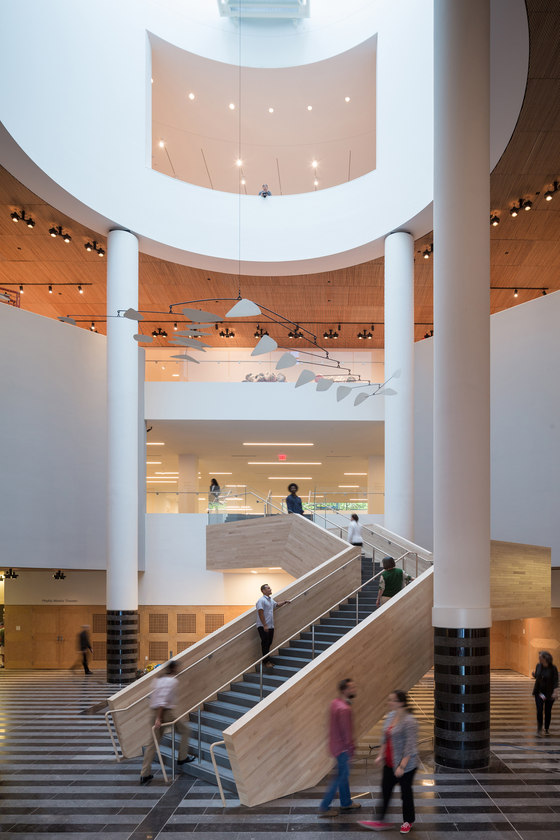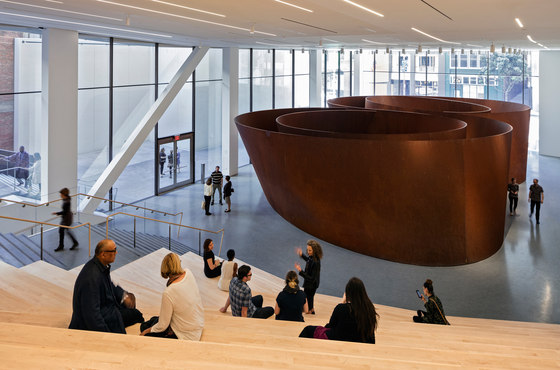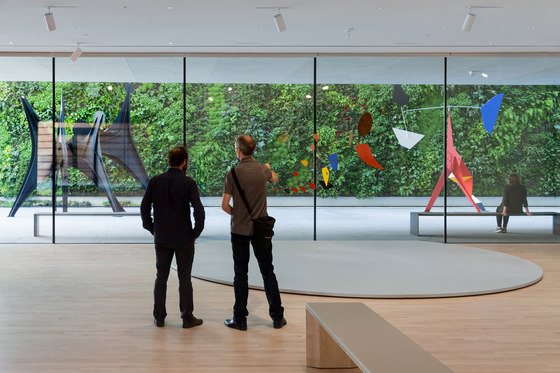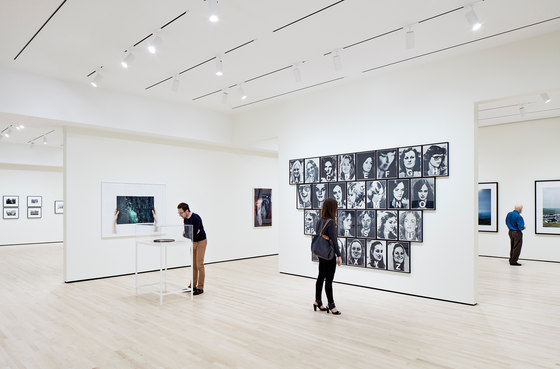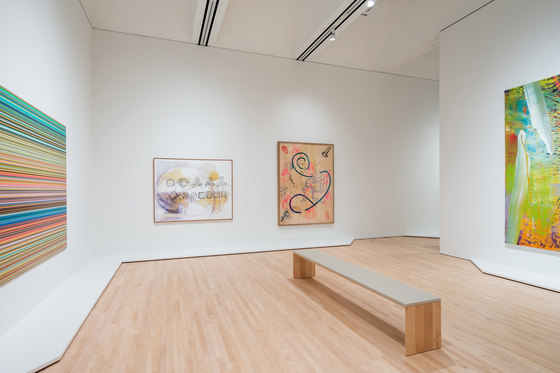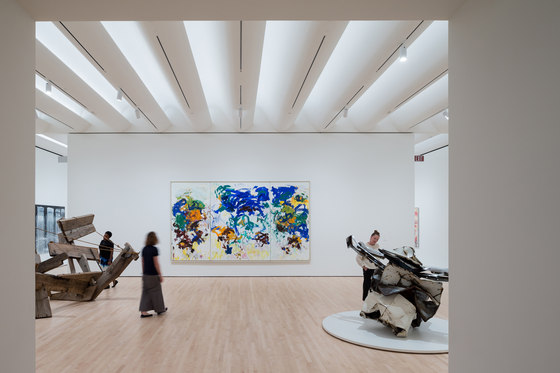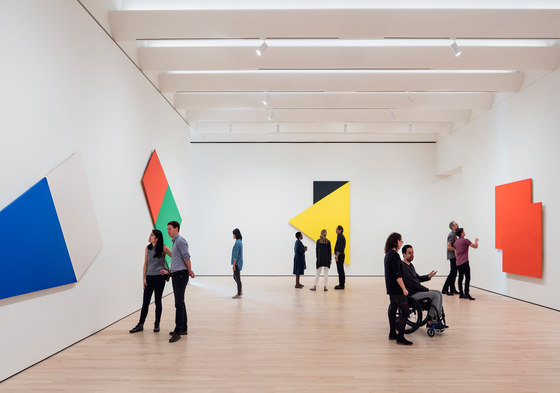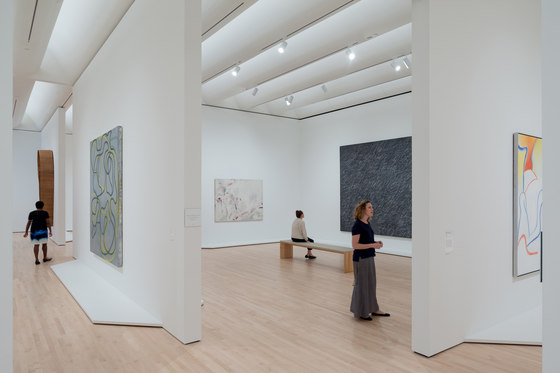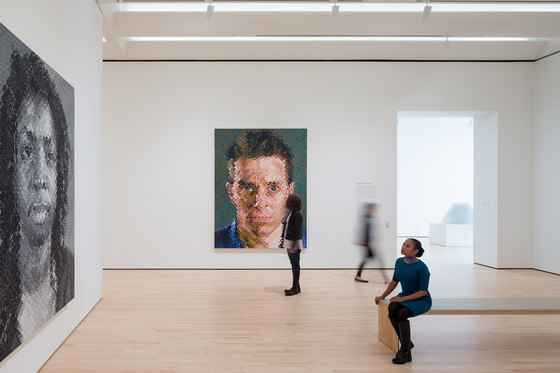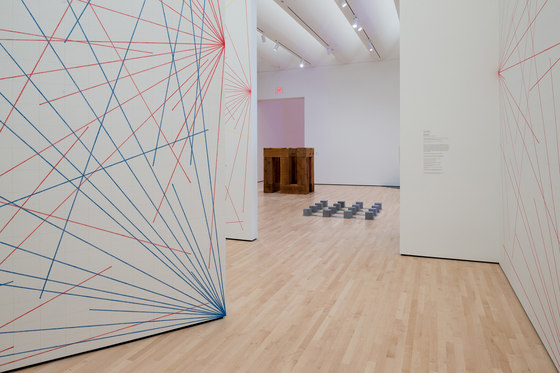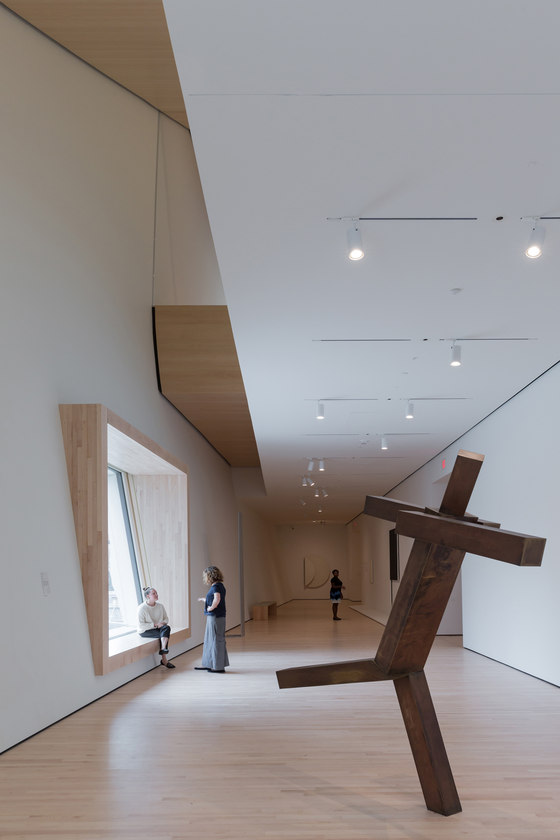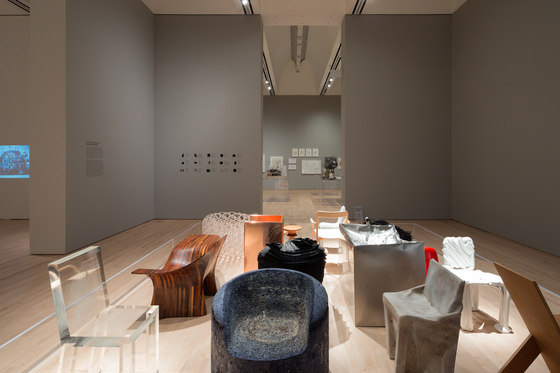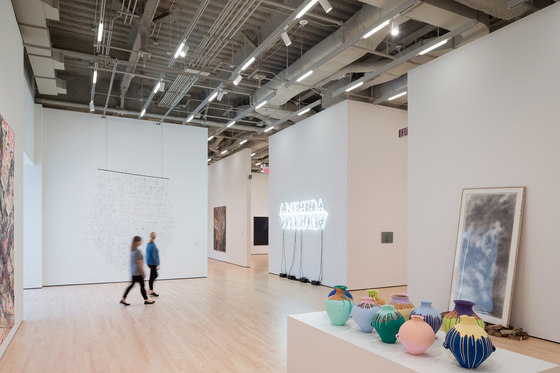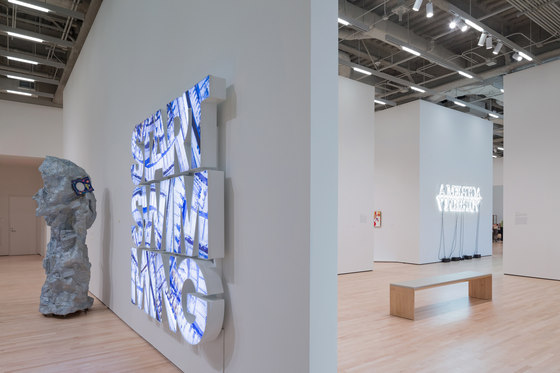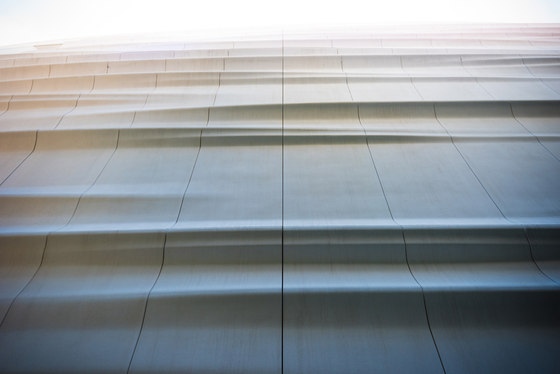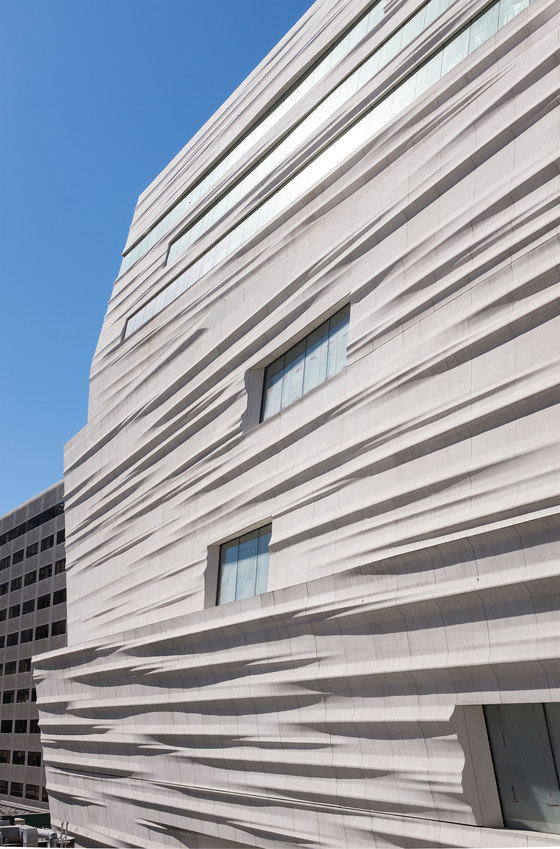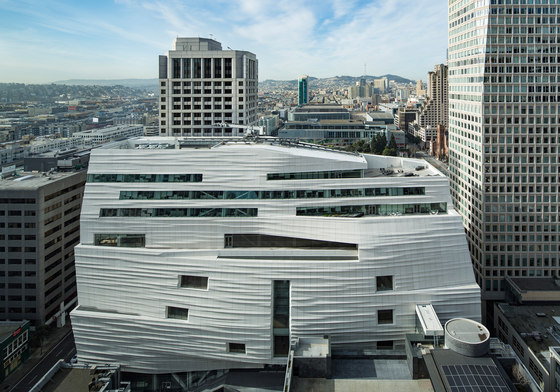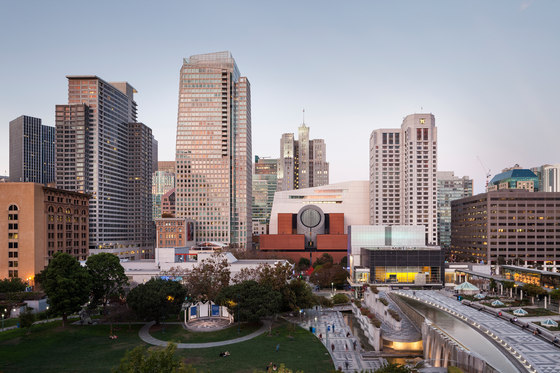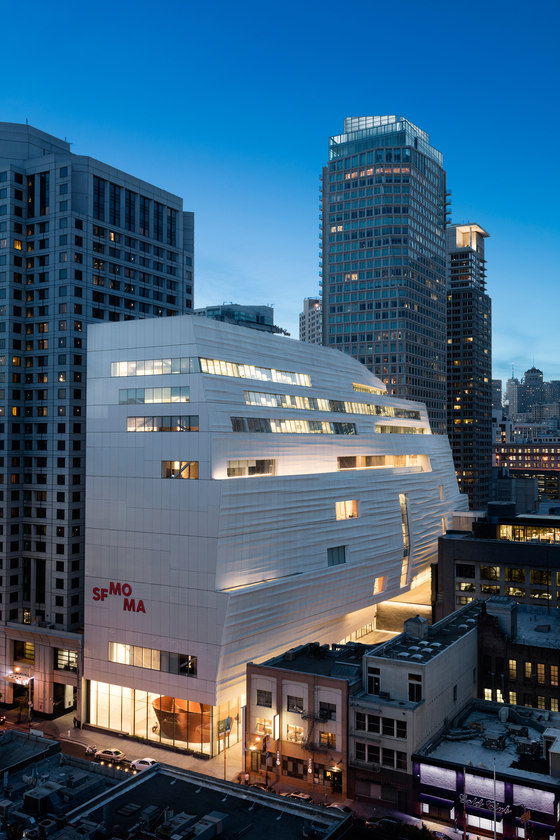Project Overview
SFMOMA’s leadership worked closely with Snøhetta to create a transformational expansion that incorporates and renovates the museum’s existing Mario Botta–designed building, which debuted in 1995. The new museum accommodates the significant growth of SFMOMA’s collection, program and visitorship, nearly tripling the museum’s gallery space, including nearly 45,000 square feet of free public-access space and weaving SFMOMA into its urban setting as never before.
Siting and Circulation
The project was conceived to create a more open and welcoming SFMOMA, with the volume of the expansion rising up behind the Botta building and stretching the full city block from Minna Street to Howard Street. This placement activates existing mid-block streets as pedestrian pathways and opens up new entrances, deeply integrating the museum into the South of Market (SoMa) neighborhood, including nearby Yerba Buena Gardens and the Moscone Center.
Two entrances on Third and Howard Streets connect visitors to free ground-floor exhibition spaces, inaugurated with a presentation of Richard Serra’s monumental sculpture Sequence (2006) in the Roberts Family Gallery, where the museum will present commissioned works in the future. The Joyce and Larry Stupski Entrance at Minna Street welcomes school groups to the Koret Education Center, as well as visitors attending in the Phyllis Wattis Theater and the Gina and Stuart Peterson White Box.
The pathways from all three public entrances converge at the second-floor Helen and Charles Schwab Hall, a spacious gathering place with views to the Pat and Bill Wilson Sculpture Terrace and the museum’s new vertical garden, the largest public living wall of native plants in the United States. In Helen and Charles Schwab Hall, visitors may pass from the free ground-floor exhibition spaces into the second-floor and upper floors of ticketed galleries for the permanent collection and special exhibitions.
New Galleries and Spaces
The expansion provides galleries well-tailored to the collections on view, and the gallery design rigorously eliminates visual clutter and emphasizes simplicity. Special areas within the expansion include designated spaces for:
• Pritzker Center for Photography (Floor 3)
Made possibly by the Lisa and John Pritzker Family Fund, 15,000 square feet of gallery, study and interpretive space - the largest gallery and interpretive space in a U.S. art museum permanently dedicated to photography
• Doris and Donald Fisher Collection Galleries (Floors 3, 4, 5, 6)
60,000 square feet of gallery space on three floors (4, 5, 6) dedicated to selections from one of the most outstanding collections of postwar and contemporary art in the world, as well as an additional gallery on the third floor dedicated to works by Alexander Calder from the Fisher Collection, generously supported by Barbara and Gerson Bakar
• Mimi and Peter Haas Galleries (Floor 7)
8,800 square feet showcasing a rotating selection of contemporary art in a loft-like gallery, framed by extensive city views from the adjacent outdoor terrace
• Architecture and Design (Floors 3, 6)
Two galleries providing 3,500 square feet dedicated to the museum’s important holdings of architecture and design, as well as special exhibitions
• Media Arts (Floor 7)
Two galleries providing 4,400 square feet of gallery space reserved for rotating and special exhibitions from the museum’s media arts collection, furthering SFMOMA’s commitment to
San Francisco Museum of Modern Art Architectural Fact Sheet 3
the field, generously supported by Pamela and Richard Kramlich and Jan Shrem and Maria Manetti Shrem
• New Work (Floor 4)
A 1,100-square-foot gallery, generously supported by Frances and John Bowes, permanently dedicated to showcasing emerging artists selected by the museum’s four curatorial departments
• Koret Education Center (Floor 2)
A 4,800-square-foot education center including a resource library and two classrooms. Accessible through a specially reconfigured entrance on Minna Street, the Center will serve 55,000 K-12 school children annually
• Performances and Events (Floors 1, 2, 4, 5)
The Gina and Stuart Peterson White Box, a flexible, double-height space, along with the museum’s upgraded Phyllis Wattis Theater provide locations for a wide range of performances and events
• Elise S. Haas Conservation Studio (Floors 7, 8)
A new two-story, 4,200-square-foot conservation center, adjacent to exhibition galleries with exceptional natural light, reveals to the public some of the museum’s vital work in this field, while also providing a studio space for artists
• Library and Archives (Lower Level)
A new 4,000-square-foot space for the museum’s extensive library and archives, containing nearly 250,000 objects, available to scholars and researchers by appointment
• Administrative Offices (Floors 8, 9, 10)
Office space for the museum’s administrative staff
Special Features
• The façade of the Snøhetta expansion, inspired in part by the fog and the waters of the San Francisco Bay, comprises more than 700 uniquely-shaped FRP (fiberglass-reinforced polymer) panels affixed to a curtain-wall system to create rippling horizontal bands which appear to shift in appearance with the changing light.
• The maple-faced Roman steps in the Roberts Family Gallery, overlooking Richard Serra’s monumental work, Sequence (2006), offer one of San Francisco’s liveliest new public gathering places.
• A new sculptural staircase designed by Snøhetta leads visitors from the Evelyn and Walter Haas, Jr. Atrium to the second floor. Located beneath Botta’s iconic oculus and Alexander Calder’s mobile Untitled (1963), it replaces the original 1995 stair. Opening up the space, the new, sculptural stair helps make a seamless connection between the existing and new buildings and accommodates the occupancy needs of the expanded museum.
• Six outdoor terraces provide spaces for installations of sculpture, and from the seventh floor highlight a dramatic view of the San Francisco cityscape.
• The largest public living wall in the United States provides a background for sculpture on the third floor terrace. With over 19,000 plants, including 21 plant species native to California and the Bay Area, the living wall is an ever-changing work of natural art supported with a recycled water system.
• SFMOMA has partnered with Bay Area innovator Meyer Sound to install sound solutions throughout the museum, including a state-of-the-art Constellation acoustic system in the newly renovated Phyllis Wattis Theater. Constellation provides the space with the utmost flexibility and intelligibility, establishing Wattis Theater as a premier arts venue in the Bay Area.
San Francisco Museum of Modern Art Architectural Fact Sheet 4
Environmental
The museum is on track to receive LEED Gold certification for the new building, with a 46% reduction in energy use and a 60% decrease in potable water use. SFMOMA is one of the first museums in the country to employ all LED lighting throughout the gallery spaces.
Snøhetta
Partner-in-Charge:
Craig Dykers
Project Architects:
Aaron Dorf, Lara Kaufman, Jon McNeal
Senior Architects:
Simon Ewings, Alan Gordon, Marianne Lau, Elaine Molinar, Kjetil Trædal Thorsen
Team:
Nick Anderson, Behrang Behin, Sam Brissette, Chad Carpenter, Michael Cotton, Aroussiak Gabrielian, Kyle Johnson, Nick Koster, Mario Mohan, Neda Mostafavi, Anne-Rachel Schiffmann, Carrie Tsang, Giancarlo Valle
Associate Architect:
EHDD, San Francisco
Duncan Ballash, Principal + President
Lotte Kaefer, Project Architect
Rebecca Sharkey, Project Manager
Project Managers:
Terry Reagan, Don Young, Bob Reuter, TJ Reagan, Inc.
Webcor Builders, General Contractor:
Jes Pedersen, CEO
Matt Rossie, Vice President/Project Executive
Pat Reidy, Construction Manager
Matt Paves, Senior Project Manager
Jim Roux, Senior Project Manager
Adam Bird, Project Manager
Joe Hovan, Senior Superintendent
Plant Construction Company, Special Projects
Conrado Vellve, Vice President
Ken Ahrens, Senior Project Manager
Mizell, Project Manager
Cliff Durant, Superintendent
Bob Klovich, Superintendent
KASA Partners, Special Projects
AV design:
BBI Engineering
Civil Engineering:
KPFF
Conservation studio, lab and art storage design:
Samuel Anderson Architects
Electrical:
The Engineering Enterprise
Façade Maintenance Engineer:
CS Caulkins
Façade Design Assist:
Kreysler & Associates, Enclos
Fire Life Safety Code and Sprinkler Engineering:
The Fire Consultants
San Francisco Museum of Modern Art Architectural Fact Sheet 5
Furniture selection and design:
Studios Architecture
Graphics + Signage:
SOM Graphics
In Situ restaurant design:
Aidlin Darling Design
Landscape Architecture:
Snøhetta
Lighting, Acoustics, AV and Façade Engineers:
ARUP
Living Wall consultant:
Habitat Horticulture and Hyphae Design Lab
Mechanical and Plumbing:
Taylor Engineering
Meyer Sound
Museum Store design:
Shopworks Design and EHDD
Network design:
TEECOM
Phyllis Wattis Theater consultant:
Auerbach Pollock Friedlander
Phyllis Wattis Theater and Gina and Stuart Peterson White Box design architect:
EHDD
Security design:
Turk Technologies
Sightglass at SFMOMA coffee bar design:
Boor Bridges Architecture
Structural Engineer:
Magnusson Klemencic Associates
Sustainability Consultant:
Atelier Ten
Vertical Transportation:
EWCG
